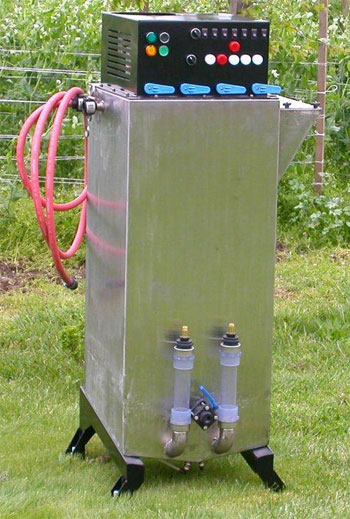I figured it’d be appropriate to start off with some kind of an introduction. I’ve been heavily involved with biodiesel since 2004, when my brother, my cousin and I joined up to form AGR Energy. Upon forming that company, my brother and I designed and built the first prototype of what eventually evolved into the BioPro™ 190 (now manufactured by Springboard Biodiesel). If you are familiar with the BioPro™ 190 today, you may find it entertaining to compare what it is now with what it was at first:
 |
 |
| THEN | NOW |
That first BioPro™ machine may have been funny looking and awkward to use, but it also didn’t work very well. I now wish we’d kept it for posterity, but we eventually gave it to a nomadic scrap metal collector who came by our shop and gave us the equivalent of lunch money in exchange for our cherished relic.
Why is this story worth relating? Well, I think at the time that first prototype was built, I was a reasonably competent engineer and designer. Yet there were so many variables and nuances of biodiesel production to which I was completely oblivious. Making biodiesel equipment may be relatively simple when compared with, say, making liquid crystal displays (http://www.appliedmaterials.com/htmafpd/animated.html), but the whole field of biodiesel production is not nearly as well developed and established as other industrial fields, and direct experience is crucial. So hopefully amid the gripes, rants, opinions, and not-really-related-to-biodiesel posts that will probably find their way onto this blog in the future, there will also be a few helpful tips and experiences that might be new to you, or are at least of interest, and which may, hopfully, make for interesting reading.
